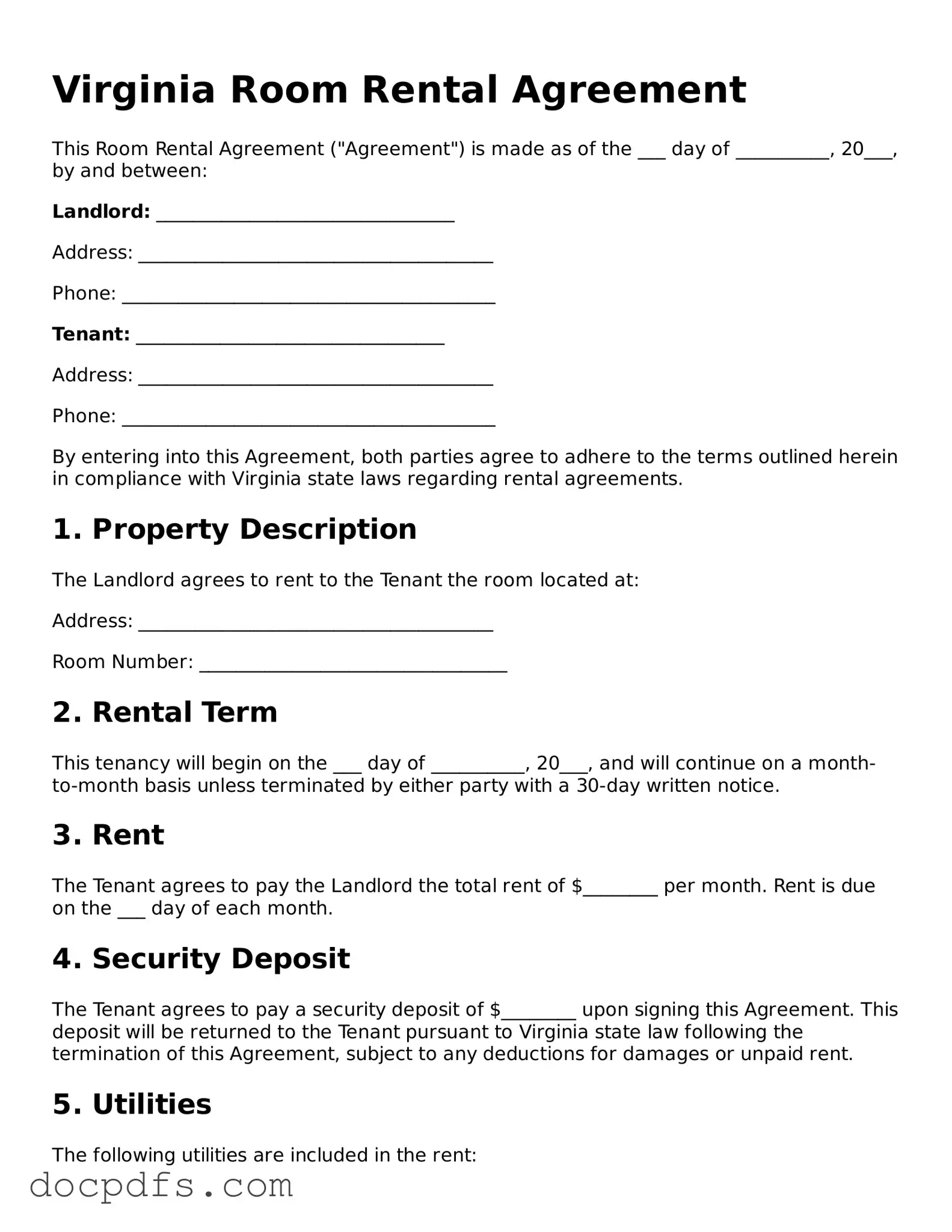What is a Virginia Room Rental Agreement?
A Virginia Room Rental Agreement is a legal document that outlines the terms and conditions between a landlord and a tenant for renting a room in a residential property. It specifies the rights and responsibilities of both parties, including rental payment details, lease duration, and property rules.
Who needs a Room Rental Agreement?
Any landlord or property owner renting out a room in their home or a rental property in Virginia should use a Room Rental Agreement. This document helps protect both the landlord's and tenant's interests by clearly defining the terms of the rental arrangement.
What should be included in the Room Rental Agreement?
Key elements of a Room Rental Agreement typically include:
-
The names of the landlord and tenant.
-
The rental property address.
-
The rental amount and payment schedule.
-
The duration of the rental period.
-
Security deposit details.
-
Rules and regulations for the property.
-
Termination conditions.
How long is a typical rental period?
The rental period can vary based on the agreement between the landlord and tenant. Common options include month-to-month agreements or fixed-term leases, such as six months or one year. It is essential to specify this duration in the agreement to avoid confusion later.
Can the agreement be modified after signing?
Yes, modifications can be made to the Room Rental Agreement after it has been signed, but both parties must agree to any changes. It is advisable to document any amendments in writing and have both parties sign the updated agreement to ensure clarity and legal validity.
What happens if the tenant fails to pay rent?
If a tenant fails to pay rent, the landlord has the right to take specific actions, which may include issuing a late payment notice, charging late fees as outlined in the agreement, or initiating eviction proceedings if the issue persists. The agreement should detail the steps to be taken in such situations.
Is a security deposit required?
A security deposit is often required to cover potential damages or unpaid rent. In Virginia, the maximum amount a landlord can charge is typically equivalent to one month's rent. The terms regarding the security deposit, including its return, should be clearly outlined in the Room Rental Agreement.
Virginia Room Rental Agreement forms can be obtained from various sources, including online legal form websites, local real estate offices, or legal aid organizations. Ensure that the form you choose complies with Virginia state laws and meets your specific rental situation.
